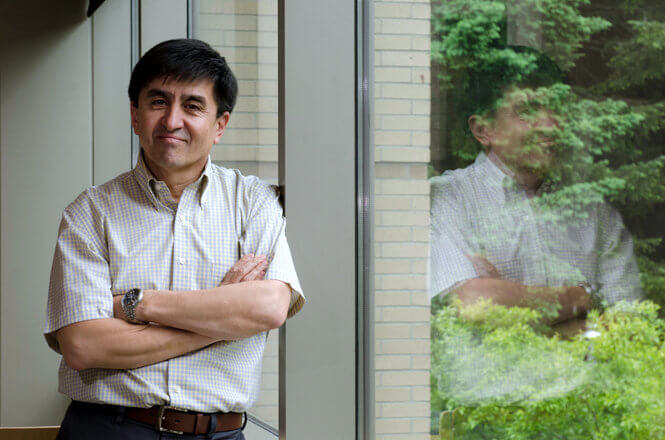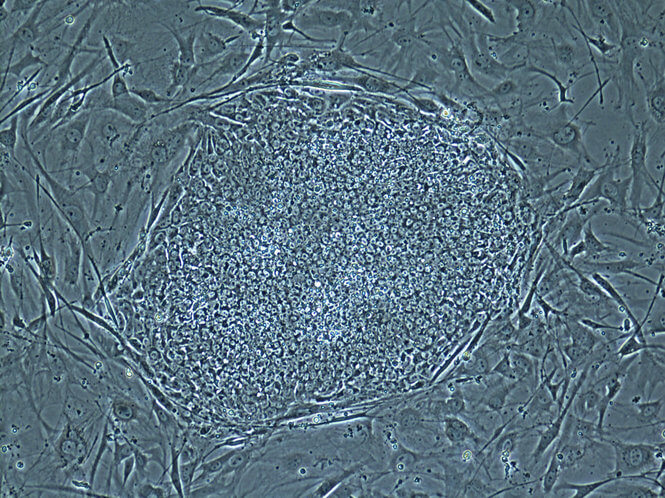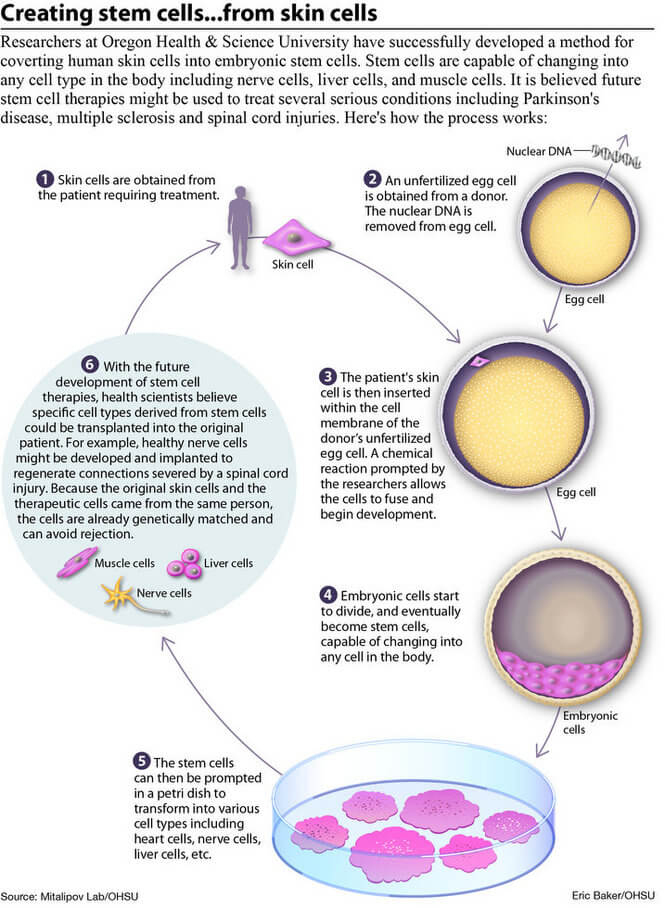The breakthrough may rekindle the debate about cloning for healing purposes. The lead researcher himself said that the hardest part was getting through the tough American bureaucracy when it comes to embryo research.

Researchers from the Oregon Medical and Scientific University took skin cells from an eight-year-old boy who suffers from a rare genetic disease and inserted their kernels into a donor's egg cell instead of the egg nucleus, thereby cloning an embryo for the first time in history, from which they took lines of stem cells containing the sick child's DNA, so that now it can be They will be used in various experiments, in the way of finding a cure or good treatments for the disease, the identity of which has not been disclosed.
.
About 15 years ago, they talked about the great hope of the biomedical revolution (or the biomed revolution): the use of cloning techniques to create tissues suitable for a specific patient that could one day cure diseases ranging from diabetes to Parkinson's. Since then, the approach has entered into a stormy debate in the field of ethics, rather than in the field of pure science, made headlines in several fraud cases, and in recent years has fallen into the shadow of a competing technology - induced stem cells.
Most of the groups that dealt with this long ago gave up on the basic method - the production of patient-specific embryonic stem cells through cloning. The debate was do we even need therapeutic cloning?
A study published this week by Shukert Mitalifov, an expert in reproductive biology at the Oregon Medical Science University, and his colleagues, may revive the debate. Mitalifov and his colleagues created embryonic stem cells from a specific patient through cloning, and they demonstrate that the technology is worthy of promotion.
Therapeutic cloning or somatic cell nuclear transfer (SCNT) began with the same methods and processes used to clone Dolly the sheep in 1996. Cells from a donor body tissue (usually skin cells) were inserted into an unfertilized egg that had its shell removed. The egg reprogrammed the donor cell's DNA and turned it into an embryo that divided until it reached the blastocyst stage. These cells were harvested and grown in the laboratory into stem cell lines that are genetically compatible with the donor and can become almost any cell type in the body.

Many scientists have tried to create human stem cells using this method, and all have failed. Woo Suk Hwang of Seoul National University in South Korea reported two successes in 2004 and 2005. It turned out that both were fabricated. Meanwhile, in other animals the success was better and Mitalifov reported the creation of cloned embryonic stem cells in monkeys in 2007. Dieter Egli, a specialist in reproductive medicine at the New York Stem Cell Center succeeded in creating human stem cell lines, but only when the egg nucleus remained inside the cell. As a result, the cells had an abnormal number of chromosomes, which limited their use.
Mitalifov and his team began their research in September 2012, using eggs from a young donor selected after a university publicity campaign. In December, after several setbacks, in December, cells from four different transplants began to develop in vitro and looked like cell colonies. Mashito Tachibana, a fertility specialist from Sendai, Japan, who had completed a fifth year in Mitalipov's lab managed to transfer them to Petri dishes, and Mitalipov continued to monitor them over Christmas break.
Success came after a small technical trick. The researchers used an inactive Sendai virus (known to induce cell fusion) to unite the egg and body cells, and an electric current to trigger embryo development. In their first attempt, they produced six blastocysts, but not a stable line of stem cells. They added caffeine which protects the egg from premature activation.
None of the techniques are new, but the researchers tried them in several combinations on more than a thousand monkeys before moving on to humans. They made the improvements to the protocol
In response to the question of why the researchers waited so long after the success of the experiments on monkeys in 2007, Mitalifov told "Science" that this time was needed to navigate the strong regulation in the US with regard to research on embryos.
One advantage of the method used by Mitalifov and his colleagues is that it does not require the use of an embryo and a fertilized egg, a subject that is still subject to great ethical debate, but only an unfertilized egg.

to the announcement of the researchers on the university website
The IATI-biomed conference that will open on June 10
Two conferences in Israel are supposed to discuss, among other things, these issues:
The International Conference on Personalized Medicine on June 30 in Herzliya

2 תגובות
Crime against humanity poor clone
Now there will be cloned mutants like Attorney Sheftel Magen Damianiuk